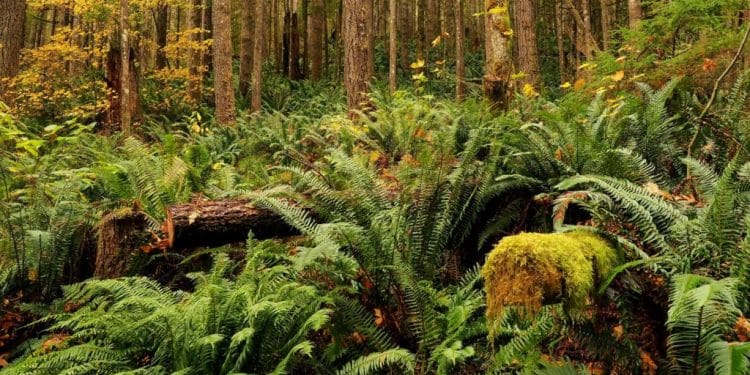Ecosystems are essential components of Earth, vast and intricate networks in which every species and process are connected to one another. From lush tropical rainforests to desolate desert landscapes, ecosystems are vitally important. Understanding and protecting them is of vital importance – environmental education can be the cornerstone of this effort.
Nature’s Balance
Ecosystems are intricate networks comprised of life forms interacting with their physical surroundings in harmony. From towering redwood trees to microscopic bacteria, each organism plays a crucial role in maintaining their ecosystem home. While such equilibrium demonstrates life’s resilience and adaptability, it’s also vulnerable to disruption; losing even one species can send shockwaves through food webs highlighting just how intertwined their ecosystem communities truly are.
For example, take Yellowstone National Park’s experience with the reintroduction of wolves. This case study serves as a classic demonstration of how keystone species can have such an immense effect on biodiversity and habitat. Once top predators in Yellowstone National Park, wolves were reintroduced after 70 years’ absence and immediately restored equilibrium in their ecosystem, showing us their profound effect on biodiversity and habitat preservation.
Biodiversity as an Indicator of Ecosystem Health
Biodiversity is a barometer for ecosystem health. A diverse population suggests a vibrant and stable environment, while decreased species indicates distress within an ecosystem. Life within ecosystems is truly amazing but their delicate balance is at risk from human activities which threaten habitat destruction, pollution and climate change.
Modern technology has become an invaluable asset in monitoring and managing ecosystems. Remote sensing satellites provide data on land use changes while GIS mapping enables precise tracking of species distributions. Together with advances in data analytics, these technologies help scientists predict and mitigate environmental changes – thus making conservation efforts both effective and efficient.
Environmental Education: A Pathway to Awareness and Action
Environmental education goes far beyond biology classrooms; it encompasses all disciplines and perspectives. By engaging with issues such as climate change and species extinction, students gain a better appreciation for nature as a complex entity that responds to human actions; it fosters a sense of stewardship while equipping individuals to take informed actions for change.
Citizen science projects, for instance, invite individuals to collect and analyze data collected about local ecosystems through citizen science projects such as citizen science. Not only do these initiatives yield valuable scientific data but they also raise awareness and foster an ethic of sustainability within communities. Integrating indigenous practices and knowledge into conservation strategies may offer invaluable insight into sustainable living and ecosystem management.
From Classroom to Conservation: Applying Knowledge to Real-World Challenges
Environmental studies go well beyond academic theory, taking on real-world challenges that threaten life on Earth. Environmental education equips students with tools for understanding these problems and finding sustainable solutions – through hands-on field studies, conservation projects and policy advocacy; students can apply their learning to make a tangible difference!
One of the greatest threats facing ecosystems today is invasive species, which can outcompete native flora and fauna, leading to biodiversity loss. Educational programs with fieldwork activities enable students to witness these species first-hand as they participate in restoration efforts; such experiences underscore how critical maintaining ecological balance is and our collective role in maintaining it.
Ecosystem Economics Analysis
Understanding the economic value of ecosystems is vital to their conservation. Ecosystem services such as clean water, pollination and climate regulation all have significant economic consequences that must be measured accurately in order to create incentives that support conservation goals. Environmental education must therefore include economic principles so students may appreciate both financial as well as intrinsic values of natural systems.
Collaboration and Innovation as Key Steps on the Journey Forward
Addressing our environmental challenges requires an ongoing, collaborative effort that goes far beyond individual educational programs. Collaboration among educators, policymakers, scientists, and communities is necessary for creating sustainable practices and effective conservation policies. Environmental education must evolve alongside new scientific discoveries while simultaneously responding to emerging environmental concerns; creating a culture of lifelong learning and innovation in its practice.
International agreements and initiatives, like the Paris Agreement and Convention on Biological Diversity, play an essential role in global ecosystem preservation efforts. Environmental education can help students comprehend the significance of such international accords as well as ways in which they can become active participants in global conservation efforts through non-governmental organizations and multilateral partnerships. Environmental educators can further help inspire their students by emphasizing this aspect of education as a foundational element.
An Ecosystem Preservation Strategy
Ecosystems are at the core of life on Earth, and our understanding of them is critical to ensure their vitality. While courses like IB Biology provide an entry point into these complex systems, an inclusive environmental education initiative must take place for its full impact to be felt by generations to come through informed action and responsible stewardship of ecosystems.





